AO Edited
Reverend Densham’s Paint Patch
The tale of this reverend and his parish is colorful in many a way.
Born on April 9, 1870, Frederick William Densham, later Reverend Densham, Rector of St. Bartholomew’s Warleggan, lived a life that was defined by this role. Ever since, the village has been inextricably linked with both the truth and legend of his 20-year incumbency.
The village of Warleggan was, for many years, considered the most remote village in Cornwall. Isolated on the lower edge of the ancient Bodmin Moor, little was ever written of Warleggan prior to Reverend Densham’s arrival. Rural, distant, and prone to extreme weather, the position and its parish would have been unattractive for many churchmen, so much so that it is possible that the humble Densham was the only option when he arrived in the village in 1931.
As Densham was already 61 when he arrived, rumors swirled that his move to the remote moor-side village was an opportunity to adopt a slower pace in his old age. If this was the case, the opportunity never arose, for he was almost immediately at odds with his small parish and congregation.
Rather than settle into the tranquil and traditional parish, he sought to transform it with his unusual ideals. Believing the organ was a “gabbled profanity,” Densham planned to have it replaced with a piano. He believed this would be more suitable for children at his services, and therefore remove the need for a separate Sunday School—an Anglican tradition of which he disapproved, for its lack of biblical basis. This idea, though well-intentioned, sowed the first seed of discontent with the parishioners, for the organ had been installed in memory of the villagers lost during the First World War. It almost came to blows when one outraged parishioner threatened: “If you touch that organ, I’ll down ye.”
Similarly, a forward-thinking man for his age and wanting to engage the future generations in more than his failed attempt to modernize the worship on offer, Densham posited that the church’s 13th-century chalice should be sold to raise funds for outdoor activities and sports. This idea was again shot down by the conservative parish council who believed Densham was meddling in the way things had always been.
Densham earned a reputation—positive to some, questionable to others at the time—for associating with the Methodists in the area. At a time where the Anglican and Methodist churches were lacking fellowship, Debsham not only diligently fulfilled his role as Reverend at the Anglican St. Bartholemew’s, but also frequently preached at the community’s Methodist chapel, where he appeared to be much more popular.
Even so, the final straw for many in his formal congregation came when, turning up for church one Sunday, they saw the previously whitewashed walls of the church had been transformed to a kaleidoscope of colors. Painted overnight by Densham alone, a medievalesqe mix of deep reds, blues, and yellows was used in hopes of refreshing the church. Offended by the garish change, parishioners urged Densham to cover the bright new walls with their original white once again. This he did, at his own expense, after being visited by the local dean, archdeacon, and bishop in the course of two days, during which time there was a meeting held within the church. For this meeting, Densham had additionally painted over each and every window of the church, leaving a single candle as the only source of light for the gathered parishioners and clergy.
Not all was lost, however. In 2009, work in the church revealed some of Densham’s original vibrant paint, including a mural depicting what seems to be Golgotha, the site of Jesus’ crucifixion, with the cross depicted in deep red. Densham’s artistic taste was unrestricted within his own abode. Inside the rectory next to the church, Densham transformed the walls, stairs, doors, and rooms using colors ranging from orange and primrose to turquoise, blue, and green as well as christening each room with biblical place names.
In a village of close-knit families, discontent spread quickly. Though the church congregation rarely even reached double figures prior to the disagreements, before long it fell to none as villagers began to refuse to go to church whilst Densham remained. Remain he did, planning, writing, and conducting two weekly services to an often empty church, every Sunday for the next two decades. Much like his persistence in preaching, Densham continued to diligently complete the church register each week in his eccentric manner. One of his entries reads: “No fog, no wind, no rain, no congregation.” On occasion, out of town visitors would give in to curiosity and hear his sermons. Most often, however, his sermons were only seen by mocking children peeping round the church door to watch the lonely rector sing and speak to the ancient walls echoing around him.
One such curious visitor, with a taste for the dramatic, spun a damaging rumor that persists to this day. Writer Daphne du Maurier, of The Jamaica Inn and Rebecca fame, wrote that Densham would supplement his absent flock with cardboard cutouts and preach to these instead. This legend, though utterly false, is likely inspired by a habit Densham did have for setting out cards bearing the names of almost 900 years worth of predecessors to his position of rector at St Bartholomew’s. Whether this was an attempt to stave off loneliness, or the actions of a man whose faith embraced and respected the dead as much as the living, Densham seemed to enjoy the process, once going so far as to say: “I am not sure I do not prefer my congregation of ghosts. They cannot object to any innovation I make.” This attitude is unsurprising from an individual who was ever more isolated from the people he wished to serve.
Living alone beside the church, and seeking some form of company, Reverend Densham bought a litter of Alsatian puppies. When grown, however, these canine companions proved to be another point of disagreement within the village, for the farming community saw the now large dogs as a danger to their sheep. To ease their fears, Densham erected an eight-foot barbed wire fence to prevent the dogs from leaving his rectory grounds. Though effective in preventing wandering dogs, the barbed wire deepened the feeling of separation both for those within and without the barricades. As time went on, Densham became more reclusive, insisting on four days’ notice from any intending on making a house visit. Those unable to make such an appointment were required to bang an oil drum at the end of the recortory garden path and await the signature tap of Densham’s walking stick as he made his way along to meet them. Some rare visitors to the rectory spoke of seeing mysterious books in Densham’s collection, on witchcraft and satanic worship. These rumors were likely false, if not more likely misinterpretations of literature exploring Eastern religions, a natural part of a man of faith’s library, particularly one so well educated and widely traveled.
Having graduated from London University, and later the St. Stephen’s Divinity School at Oxford, Densham was especially well educated. In the early 20th century, when international travel was far rarer and intrepid, Frederick Densham is recorded to have travelled to Germany, South Africa and even as far as Ceylon (now Sri Lanka). While in South Africa, it is likely Densham was exposed to the influence of Mahatma Gandhi, who had left the country seven years earlier after 21 years working in the country and developing his civil rights and political campaigns.
Some evidence suggests that he may have even visited India, either as a missionary, an adventurous traveler inspired by Ghandi, or both. Regardless, it is likely that Densham was familiar with ahimsa, the Indian principle of causing no harm to living things. Combined with his strict adherence to similar Christian doctrine, this could explain why he chose to isolate himself to avoid antagonism.
The influence of his exposure to Gandhi’s life whilst in South Africa, and Densham’s mayhap missions to India himself, appeared to influence his way of living. The reverend named his dog after the revolutionary who he called “a great servant to humanity and master in the course of peace.” He was known to cremate all animals that died on the rectory grounds, and even requested a cremation himself when his time came, an unusual choice at the time. Densham adopted a vegetarian diet after arriving in Warleggan, another foreign idea for an Englishman in the early 20th century, particularly in a community so reliant on farming and livestock. Sustained primarily on a diet of oats, Densham also grew his own apples and considered boiled nettles not only a treat but “one of the best things you can eat.”
The reverend would harvest the fruit of his apple tree and divide it into neatly labeled boxes at the end of the garden path for passing parishioners. He also grew camellias and rhododendrons that he would share among the villagers in spring. During the Second World War, Densham planted a cherry tree to honor one local man who had been called up to fight.
But his efforts to reconcile and foster friendships within the village, including an early cinema and a playground, both built using Densham’s own money, largely failed. They went as unvisited as the church he led. Resigned to isolation, Frederick Densham is quoted as darkly saying to one reporter: “They all come to me in the end. I conduct all their funerals. They won’t come to church on their feet, but they come in their black carriages.”
In 1953 Frederick William Densham’s own metaphorical black carriage came. After days went by with no smoke visible from the chimney and deliveries left uncollected outside the rectory, locals became concerned. The reverend was found, surrounded by walls of vibrant color. Densham had passed away several days earlier part way up the stairs heading poetically towards rooms named after Bethany, where Lazarus was raised from the dead, and Emmaus, where Jesus was said to appear after his resurrection.
According to his wishes, Densham was cremated, but his desire to then be scattered in Warleggan was ignored. This wish hints at an attachment Frederick Densham had developed in spite of his exclusion, but the fact his ashes were instead scattered at Plymouth is another example of the village’s resistance to him. Save for Densham’s own solicitor, no other mourners attended his funeral, it is debated if they even knew where and when the funeral was to take place.


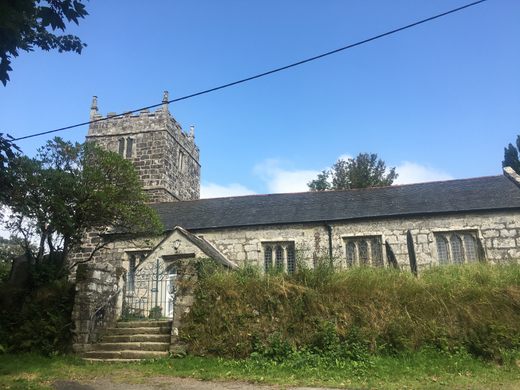
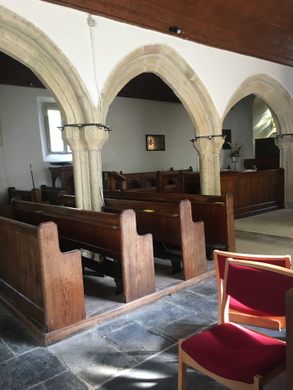
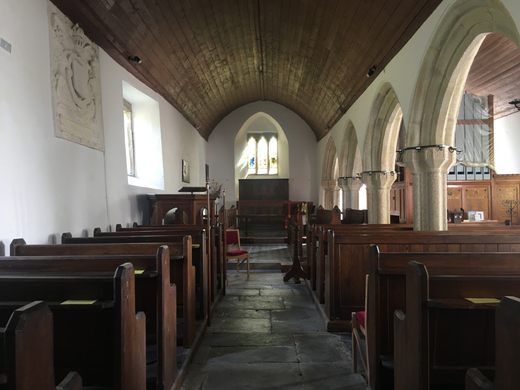

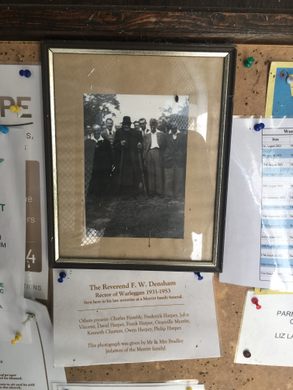
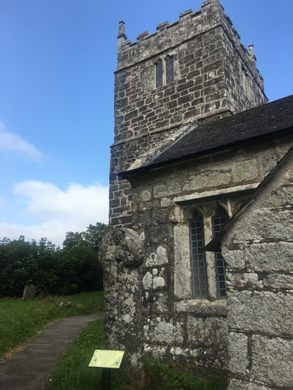
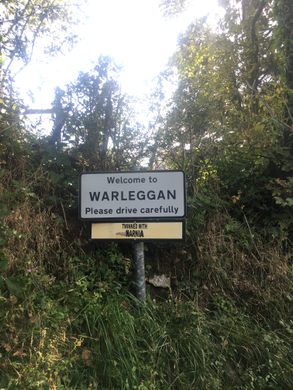


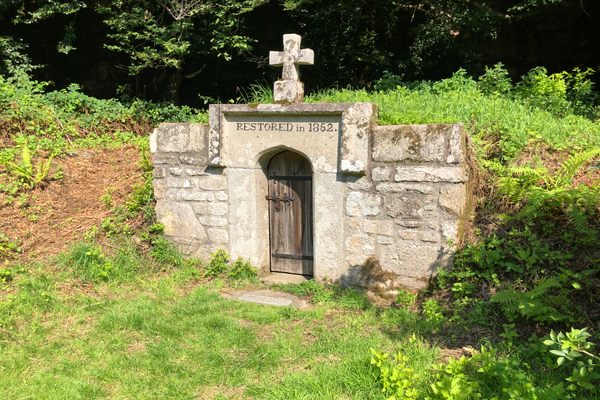

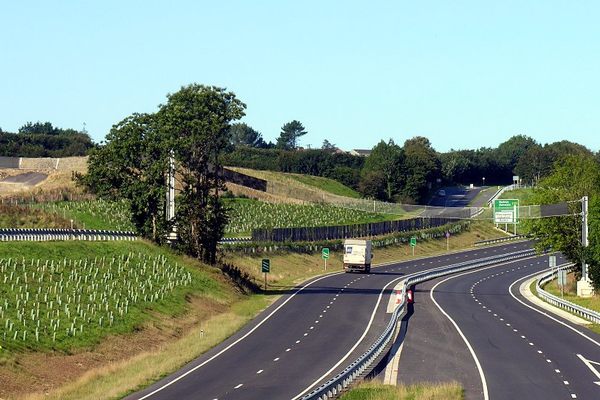


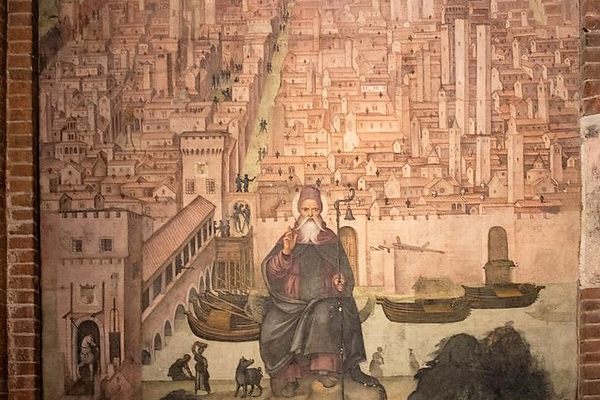
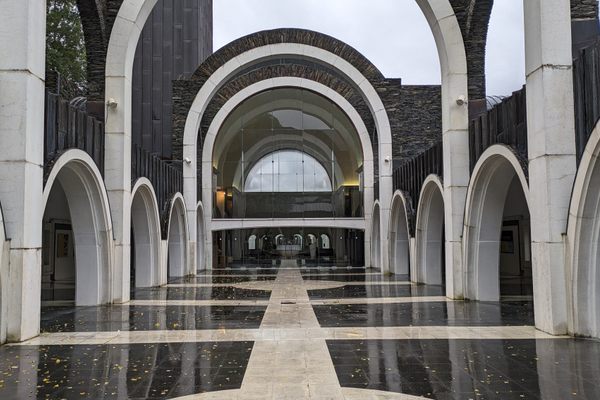


Follow us on Twitter to get the latest on the world's hidden wonders.
Like us on Facebook to get the latest on the world's hidden wonders.
Follow us on Twitter Like us on Facebook